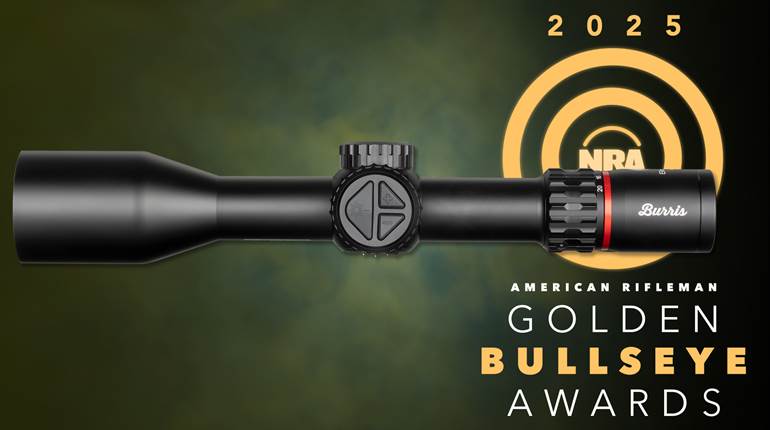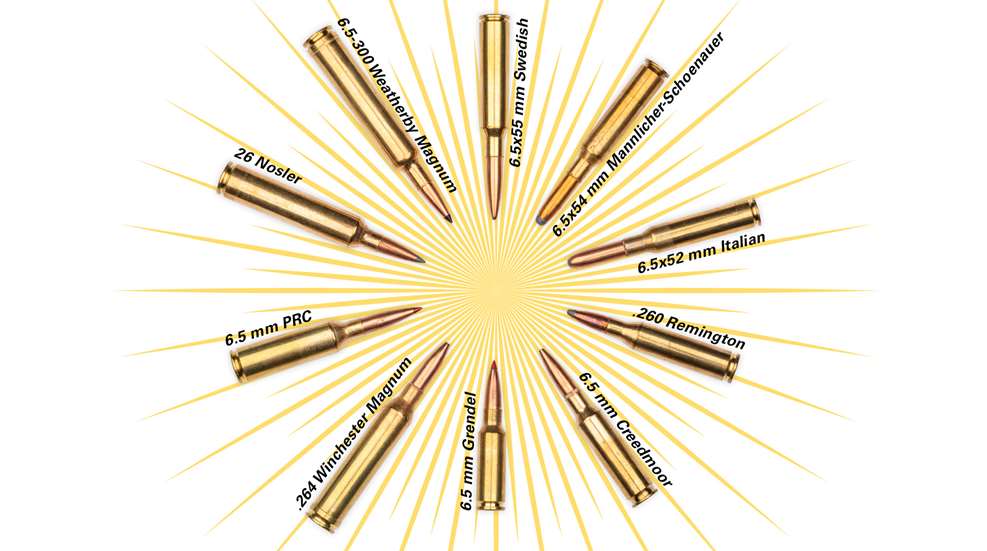
Long the caliber of choice abroad, the once-lowly 6.5 mm (0.264") has made significant inroads in the United States in a relatively short period of time—especially during the last two decades. Need proof? MidwayUSA currently lists 86 loads for the 6.5 mm Creedmoor, which is more than for the .270 Win., .300 Win. Mag. and several other stalwarts. Meanwhile, even less dominant cartridges like the .260 Rem. and 6.5x55 mm Swedish each have 21 and 19 choices, respectively. A wide variety of loads is a sure sign of market demand for a cartridge, and companies seldom diversify those with limited interest—if they load them at all.
Moreover, whereas the default chambering for most riflemen used to be the ubiquitous .308 Win., the stately .30-’06 Sprg. or the far-reaching .300 Win. Mag., among others, such is no longer the case. Just watch gun store shelves; consumers now reach for the 6.5 mm Creedmoor, 6.5 mm PRC and others with increasingly regularity. So, what’s changed?
The average American shooter/hunter finally understood what competitive shooters already knew—that the long, svelte and weighty 6.5 mm bullets, which boast especially high ballistic coefficients (BCs), generate considerably better external ballistics than do most other calibers. Said projectiles are exactly what’s needed for engaging long- and extreme-range targets and hunting where longer-than-normal shots are the norm.
Further benefitting hunters is their sectional density (SD). According to the NRA Firearms Sourcebook, sectional density is “the ratio of bullet weight to the square of its diameter.” In layman’s terms, just know that the higher a bullet’s SD, the better it will penetrate—if a quality, controlled-expansion type is used, of course. As a group, 0.264" bullets exhibit very high SDs. As an example, a 140-grain, 6.5 mm bullet has an SD of 0.287, whereas that same weight in 0.277"- and 0.284"-calibers results in 0.261 and 0.248, respectively.
It’s often said that “the proof is in the pudding.” Well, I’ve witnessed Hornady 120-grain Gilding Metal eXpanding (GMX) bullets from a 6.5 mm Creedmoor zip through kudu, impala, black wildebeest, fallow deer and other species at distances well beyond 300 yards, so the caliber’s billing as a deep penetrator is accurate.
Given the abovementioned qualities of 0.264"-diameter bullets, it makes sense that many of the newest chamberings to reach the market employ them, but there are a host of established 6.5 mm chamberings, too. Navigating the six-five crowd can be a challenge. So what follows is a quick guide to 10 of the best known that should help.
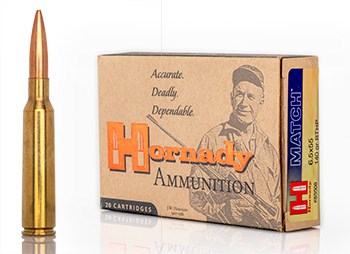 6.5x55 mm Swedish
6.5x55 mm Swedish
The 6.5x55 “Swede” has serious staying power. Developed as a military cartridge more than a century ago, the long-action chambering continues to thrive in Europe due to its accuracy and game-stopping ability. Stateside, it’s decidedly less popular. A lack of modern, non-military firearms in the Scandinavian cartridge certainly hasn’t helped its acceptance among Americans, and the few that are available carry a premium.
On paper, the Swede’s external ballistics may seem unimpressive at first; with a 46,000-c.u.p. maximum average pressure (MAP), the cartridge is frequently loaded with 140-grain bullets in the 2,500-2,650 f.p.s. range. Keep in mind, though, that this nearly replicates the velocities attained by the popular 6.5 mm Creedmoor and .260 Rem. with like-weight projectiles. Switching to 120-grain bullets will add a couple hundred feet per second.
As mentioned elsewhere, those aerodynamic 6.5 mm bullets penetrate deeply. It’s little wonder why they’re commonly utilized—even nowadays—for game up to and including moose. As a testament to its phenomenal accuracy, Lapua manufactures 6.5x55 mm Swede component brass and competition-specific ammunition.
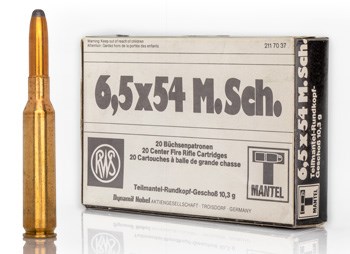 6.5x54 mm Mannlicher-Schoenauer
6.5x54 mm Mannlicher-Schoenauer
The 6.5x54 mm Mannlicher-Schoenauer (M-S) was adopted by the Greek army at the turn of the previous century, and was later employed in limited use by the Austro-Hungarian army. The split-bridge, bolt-action M-S rifle, which featured a then-revolutionary rotary-style magazine, was accurate and reliable, owing to its quality construction. A number of the M-S rifles have made it to the United States, which necessitates the cartridge’s inclusion in this list.
Using the original 160-grain bullets, the 6.5 mm M-S established an enviable reputation for downing the world’s toughest game, including elephant. Reportedly, Walter Dalrymple Maitland Bell (a.k.a. W.D.M. “Karamojo” Bell) felled a noteworthy portion of his record pachyderm harvest using it.
Today, the cartridge hangs on by a thread in the United States. In fact, I was only able to locate loads from Prvi Partizan and Buffalo Arms Co., which used 156- and 160-grain round-nose (RN), lead-core bullets, respectively. Whereas the 156-grain bullet hits 2,395 f.p.s., the 160-grain projectile trudges along at only 1,900 f.p.s. The latter utilized Norma brass, which can be purchased as a component. If you handload, which you should if you have a M-S rifle, then you have access to an abundance of 6.5 mm bullets, including Hornady’s perfectly matched 160-grain RN InterLock.
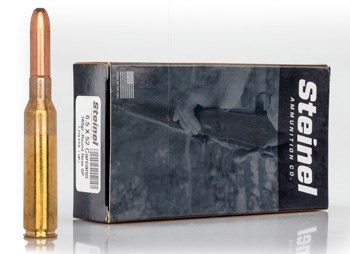 6.5x52 mm Italian
6.5x52 mm Italian
Yet another cartridge from the Mediterranean region, the 6.5x52 mm Italian (a.k.a. 6.5 mm Carcano) was adopted as the official Italian military chambering in 1891. Housed in the bolt-action Model 91 Mannlicher-Carcano rifle, during the post-World War II period, large numbers of these value-priced rifles hit American shores. Although these were Mannlicher inspired, intricacies affect their performance.
Concerning external ballistics, the 6.5 mm Carcano is similar to the 6.5x54 mm M-S; this is unsurprising as, according to Cartridges Of The World, 13th Ed., “Reloadable cases can be made very easily from 6.5x54 Mannlicher cases.” Problem is, the latter are difficult to find, too. Fortunately, 6.5x52 mm Italian cases can be had from Prvi Partizan and Norma, and loaded ammunition is made by the former. There’s a 123-grain SP loaded to 2,690 f.p.s., while the 139-grain FMJBT hits 2,525 f.p.s. Reloading will give you additional options, but there’s a caveat.
According to the Hornady Handbook Of Cartridge Reloading, 10th Ed., “Carcano rifles were built with a 0.257" bore and 0.268" grooves. The rifles are, by virtue of this, not generally accurate with conventional 0.264" 6.5 mm bullets.” That’s very limiting, but Hornady does offer a 160-grain, 0.267"-diameter RN bullet specifically for Carcano rifles.
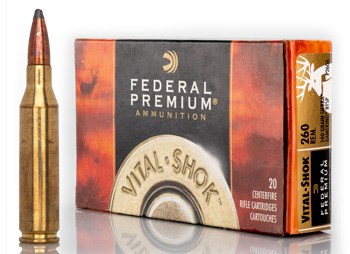 .260 Remington
.260 Remington
During its introduction, this cartridge was envisioned—and marketed—foremost for hunting, and thus the early rifles have twist rates that are poorly suited for stabilizing modern, high-BC bullets. Contemporary riflemakers have since remedied Big Green’s oversight. Now it’s slowly gaining in popularity due to its near-equivalent performance with the 6.5 mm Creedmoor—with one added advantage.
But, let’s start with the drawbacks. With a maximum cartridge overall length (C.O.L.) of 2.800" and a 2.035" case length, heavy 6.5 mm bullets must be seated deeply (when compared to the Creedmoor), thereby reducing usable propellant space. The cartridge also retains the modest, 20-degree shoulder angle of its parent, the .308 Win. Its case capacity is around 47 to 50 grains of water—similar to that of the 6.5 mm Creedmoor but slightly less than that of the 6.5x55 mm Swede.
Component cases are fewer in number than its Creedmoor counterpart, but the big names—Lapua, Norma, Nosler, Hornady and others—are there. You can also fashion .260 Rem. brass from .308 Win. family members in a pinch, too. That’s the true advantage of the .260. The number of manufacturers producing loaded match and hunting ammunition continues to increase, though “mom-and-pop shops” might not carry it. Best of all, nearly any gun chambered for the .308 Win.—including AR-10-types—can be adapted to fit the .260, though custom, precision bolt guns are where you find it most often nowadays. Not as many production options are currently available.
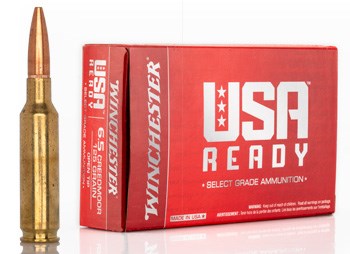 6.5 mm Creedmoor
6.5 mm Creedmoor
The 6.5 mm Creedmoor has changed many American minds about the virtues (and needs) of the .264 caliber. Developed by Hornady as an efficient, low-recoil, across-the-course match and hunting cartridge, it is as at home in NRA High Power and Precision Rifle Series (PRS) competitions as it is pursuing a majority of the world’s huntable species. Since it was developed from the ground up as a competition cartridge, it has many built-in features that make it especially efficient and accurate.
For starters, with a C.O.L. of 2.825" and a maximum case length of 1.920", long, high-BC bullets need not intrude excessively into the space for propellant, and there’s more room to adjust the bullet to fit differing throat lengths and yet still fit in the magazine. Rifles chambered for the cartridge have at least a 1:8" twist, so they’ll stabilize the heaviest 6.5 mm bullets. Furthermore, the cartridge has the desirable blend of a 30-degree shoulder and a longer-than-caliber neck. Although it debuted with large rifle primer pockets, Lapua now offers component brass with small rifle primer pockets. When it comes to diversity in ammunition, the Creedmoor has no equal among 6.5 mm cartridges. There’s an array of ammunition, and rifle, options for every pursuit.
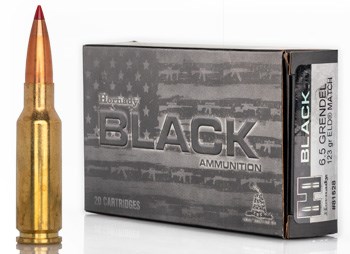 6.5 mm Grendel
6.5 mm Grendel
The only AR-15-compatible cartridge in this listing, the Grendel nonetheless generates respectable ballistics (for its diminutive size) and phenomenal accuracy. That’s due to an ingenious design and unparalleled pedigree. Based on the renowned PPC family of competition cartridges, the Grendel exemplifies the preferred short, fat body for maximum efficiency. It has the requisite 30-degree shoulder, a 1.520" maximum case length, minimum taper and a 0.438"-diameter head. Being restricted to a 2.260" C.O.L. leaves just 0.74" for bullet projection, but since the cartridge is at its best with bullets weighing 130 grains or less, that’s no handicap.
While not as myriad as the previous two chamberings, 6.5 mm Grendel brass is available from the well-known makers, and a pound of powder goes a long way in the petite, extra-efficient cartridge. As for factory ammunition, MidwayUSA lists 17 loads.
When coupled with the right bullet and setup, the 6.5 mm Grendel is equally at home pursing feral hogs, deer and antelope as punching paper at distances out to 600 yards or so—especially in a well-tuned AR, where a full magazine is a blessing, or in one of the few bolt-actions chambered for it. For the budding hunter, there are few better options.
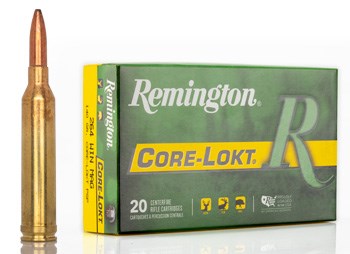 .264 Winchester Magnum
.264 Winchester Magnum
Formed by necking down the .458 Win. Mag., and introduced in 1958, the .264 Win. Mag. was envisioned as a long-range hunting cartridge—a goal it handily achieved. But all was not sunshine and unicorns. Loaded to a maximum C.O.L. of 3.340", the cartridge requires a long action. It has a belted case, which many shooters detest, and when combined with a 64,000-p.s.i. MAP, certainly affects its useful life. That’s a problem, as few companies make component brass. The news isn’t much better for loaded ammunition, either; in fact, I identified only six options at MidwayUSA. They’re also pricey and only feature hunting bullets.
So, why would you own a rifle in .264 Win. Mag.? Speed. Bullets weighing 140 grains can top 3,000 f.p.s. with near-max handloads and at least one factory loading. Of course, this assumes the .264 in question has a sufficient twist rate to stabilize heavy, high-BC bullets—which not all factory rifles from yesteryear have. Twenty-six-inch barrels are required to realize this cartridge’s full ballistic potential.
Also keep in mind that the .264 Win. Mag.’s velocities come at a cost, and that’s barrel life. Like other high-intensity cartridges, if you shoot often, reduced barrel life can be expected.
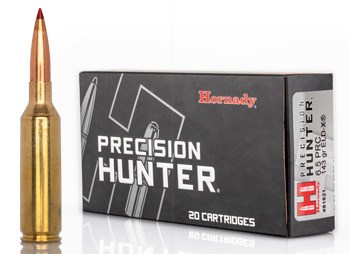 6.5 mm PRC
6.5 mm PRC
A higher velocity at the muzzle results in a flatter trajectory, less wind deflection and greater on-target energy. It also helps ensure reliable bullet upset when impacting game. It was for these reasons that Hornady created the magnum 6.5 mm Precision Rifle Cartridge (PRC) to complement its mild-mannered 6.5 mm Creedmoor.
Like the Creedmoor, a requirement of the beltless, short-action 6.5 mm PRC was that it had to keep most of the bullet outside of the case to preserve propellant space, which was maximized by minimal body taper. With a 2.030" case length and 2.955" C.O.L., there’s 0.925" for bullet protrusion, which is important for today’s long, aerodynamic projectiles. Hornady retained the familiar 30-degree shoulder angle of its predecessor. It’s designed from the ground up for top-tier accuracy, and it delivers. In fact, I’ve yet to see an inaccurate 6.5 mm PRC rifle.
As for ammunition, there is sufficient variety in loads; I quickly identified nine “premium” options. Trouble is, it’s quite costly. Fortunately, Hornady, Nosler and now Lapua manufacture 6.5 mm PRC component brass. In all honesty, if you need the level of performance that the 6.5 mm PRC delivers, then you need to take the time to reload for it. Do so, and you’ll see what 6.5 mm cartridges are truly capable of.
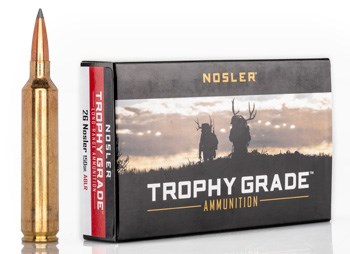 26 Nosler
26 Nosler
The 26 Nosler was a successful attempt to maximize the ballistics of a non-belted—think longer case life and better headspace off the shoulder—6.5 mm cartridge that would still fit within a long action. To do so, it features a 2.590" case with very minimal taper, measuring 0.534" at the rim and 0.528" at the junction of the body and shoulder, and a 35-degree shoulder. Like the other modern 6.5 mm cartridges in this listing, the 26 Nosler permits much of the bullet to reside outside of the case; here it’s 0.75". That preserves much of the case’s 93-grain capacity (of water), which facilitates high velocities, such as 3,400 f.p.s. with a 129-grain AccuBond Long Range.
Reloading for the 26 Nosler isn’t onerous—and it’s necessary unless you’re well-heeled—but it’s a costly one to feed. Cases are available from Nosler, Norma and Hornady, and run more or less around $3 apiece, and a pound of propellant goes fast when top loads approach 100 grains each. Further, I found that, although it offers five options, only Nosler is loading ammunition for the cartridge, so reloading is mandatory to increase for diversity. Expect to pay around $5 per round.
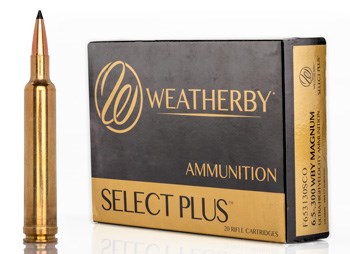 6.5-300 Weatherby Magnum
6.5-300 Weatherby Magnum
Weatherby demanded the highest velocity possible with a 6.5 mm bullet when creating the 6.5-300 Wby. Mag. Mission accomplished. Using the .300 Wby. Mag. case as the parent, this potent cartridge achieves ultra-high speeds, but requires a magnum action to handle it. Like its parent, the maximum C.O.L. is 3.600". Concerning velocities, with a 130-grain Scirocco II and 156-grain Berger Elite Hunter, it achieves 3,476 f.p.s. and 3,050 f.p.s., respectively—impressive! The latter has a G1 BC of 0.679 and only drops 23.3" at 500 yards with a 300-yard zero, where it still has 1,964 ft.-lbs. of energy remaining.
Weatherby loads economical and premium loads featuring controlled-expansion bullets. I’d recommend the latter for anything other than punching paper, due to the high impact velocities. Ammunition costs about $5 each, so lengthy range sessions will be expensive. The verdict is out on barrel life, though for hunting, it’d last a lifetime.
Like its parent, the 6.5-300 Wby. Mag. features a belted case, and case life is generally short with such. Currently, only Weatherby (i.e. Norma) makes brass for this cartridge, and it’s a little more than $2 each. The cartridge retains the double-radius shoulder of its predecessors, and maximum bullet projection is around 0.775".
The Wrap
There’s no doubt that the 6.5 mm-diameter projectiles possess an enviable set of ballistic characteristics, and more are sure to come. But with those surveyed here, the competitor or hunter has an excellent slate from which to choose. Hopefully this rundown helped to make that choice a little easier.












